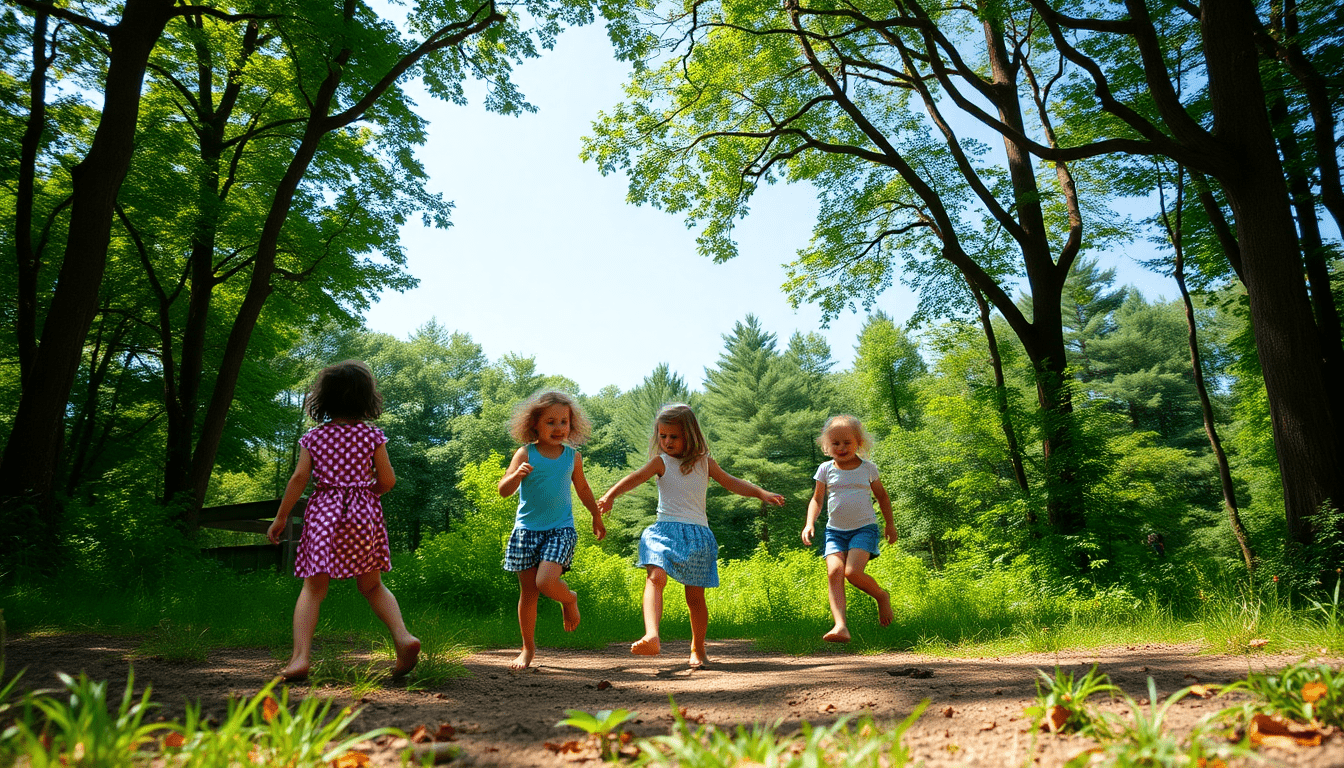
Biodiverse Soil Exposure and Children’s Gut Health: Natural Playgrounds vs. Concrete Yards
Biodiverse Soil Exposures and Children’s Gut Health: Natural Playgrounds vs. Concrete Yards
Children’s gut health plays a crucial role in their overall well-being. A balanced gut microbiome supports digestion, immunity, and even mood regulation. Recently, researchers have linked children’s gut health benefits directly to their exposure to nature, especially through outdoor play. This blog explores how nature exposure impacts the gut microbiome in children, comparing the benefits of natural playgrounds with concrete yards.
Understanding the Gut Microbiome in Children
The gut microbiome is a community of trillions of microorganisms living in the digestive tract. For kids, this community is still developing and can be strongly influenced by their surroundings and lifestyle. Microbiome diversity in kids is important because a richer mix of gut bacteria helps protect against allergies, infections, and chronic illnesses.
Gut health affects far more than just digestion. It influences immune function and even affects brain development. A healthy gut microbiome can support better nutrient absorption and stronger defenses against harmful pathogens, which are vital during childhood growth.
The Biodiversity Hypothesis and Children's Health
The biodiversity hypothesis suggests that reduced contact with natural environments lowers our exposure to the beneficial microorganisms needed to develop healthy immune systems. In simpler terms, the less a child interacts with diverse natural settings, the less diverse their microbiome becomes.
Environmental biodiversity connects directly with human microbiomes. When children spend time in biodiverse areas, they pick up a variety of microbes from plants, soil, and animals, which help train their immune system and improve gut microbial diversity.
Exposure to these diverse microbes early in life is linked to lower risks of allergies and autoimmune diseases. This makes a strong case for nature exposure gut microbiome children, as natural environments provide a unique microbial richness that cities and indoor spaces lack.
Nature Exposure and Its Impact on the Gut Microbiome
Outdoor activity plays a key role in promoting microbiome diversity in kids. When children explore natural settings like forests, parks, or biodiverse gardens, they are exposed to an array of microorganisms. These encounters help seed the gut microbiome with beneficial bacteria that support immune health.
Natural elements such as soil, leaves, and water are often teeming with microbial communities that we do not find in urban or indoor environments. Touching or playing in soil introduces children to these microbes, helping to build stronger immune systems and encouraging resilience against illness.
Moreover, regular interaction with nature can reduce stress levels, which indirectly supports gut health by calming inflammation and improving gut-brain communication.
Comparing Natural Playgrounds and Concrete Yards
Natural playgrounds, like those studied in the forest soil playground study, use soil, plants, logs, and other organic materials to create play spaces. These environments provide a rich diversity of microbes and a sensory experience that concrete yards simply cannot offer.
Concrete yards, common in urban areas and schools, have limited or no soil exposure and far less biodiversity. This leads to fewer opportunities for children to encounter beneficial microbes. The lack of microbial exposure in these settings might contribute to less diverse gut microbiomes in kids.
The forest soil playground study showed that children playing regularly in natural soil-rich playgrounds had increased microbiome diversity compared to those who played in conventional, concrete environments. This difference can translate into lasting impacts on children’s gut health and immune resilience.
Children's Gut Health Benefits from Biodiverse Soil Exposures
Findings from the forest soil playground study revealed that children exposed to biodiverse soil environments experienced significant improvements in their gut and skin microbiomes. These positive shifts were linked to stronger immune responses and reduced inflammation.
Real examples include children showing decreased sensitivity to allergens and a lower rate of common infections after spending time in natural play spaces. These benefits are attributed to increased microbial exposure and the strengthening of gut health through contact with rich, diverse environments.
Long-term, exposure to biodiverse environments in childhood may protect against autoimmune diseases and support overall well-being, highlighting the importance of designing natural play areas and promoting outdoor activity.
Practical Tips for Increasing Nature Exposure for Kids
Parents and caregivers can take simple steps to boost nature exposure gut microbiome children. Creating biodiverse play areas at home could include adding soil patches, planting native flowers, or setting up small vegetable gardens for kids to explore.
Schools can also incorporate natural playground elements, such as logs, sand, and plants, to encourage direct contact with soil and greenery.
Encouraging daily outdoor activity is key. Even short walks in parks, barefoot play in grass, or gardening can help introduce beneficial microbes to children's microbiomes.
Limiting screen time and making outdoor play a daily habit supports a healthier gut and a stronger immune system.
Conclusion
In summary, nature exposure offers significant benefits to children’s gut microbiome, helping build a diverse and resilient microbial community. Natural playgrounds provide richer microbial environments than concrete yards, leading to improved gut health and stronger immune systems in children.
By encouraging kids to play in biodiverse soil-rich spaces, parents and educators can support lifelong health benefits.
Take a step today by choosing natural outdoor play environments and promoting daily nature exposure to boost your child’s gut health naturally.
Additional Resources
For those interested in exploring this topic further, studies on the biodiversity hypothesis and the forest soil playground study offer valuable insights. InnerBuddies’ Microbiome Test is a great tool for discovering your child's unique microbiome and getting personalized advice to improve gut health. Visit InnerBuddies to learn more and start your journey toward better well-being through nature.

